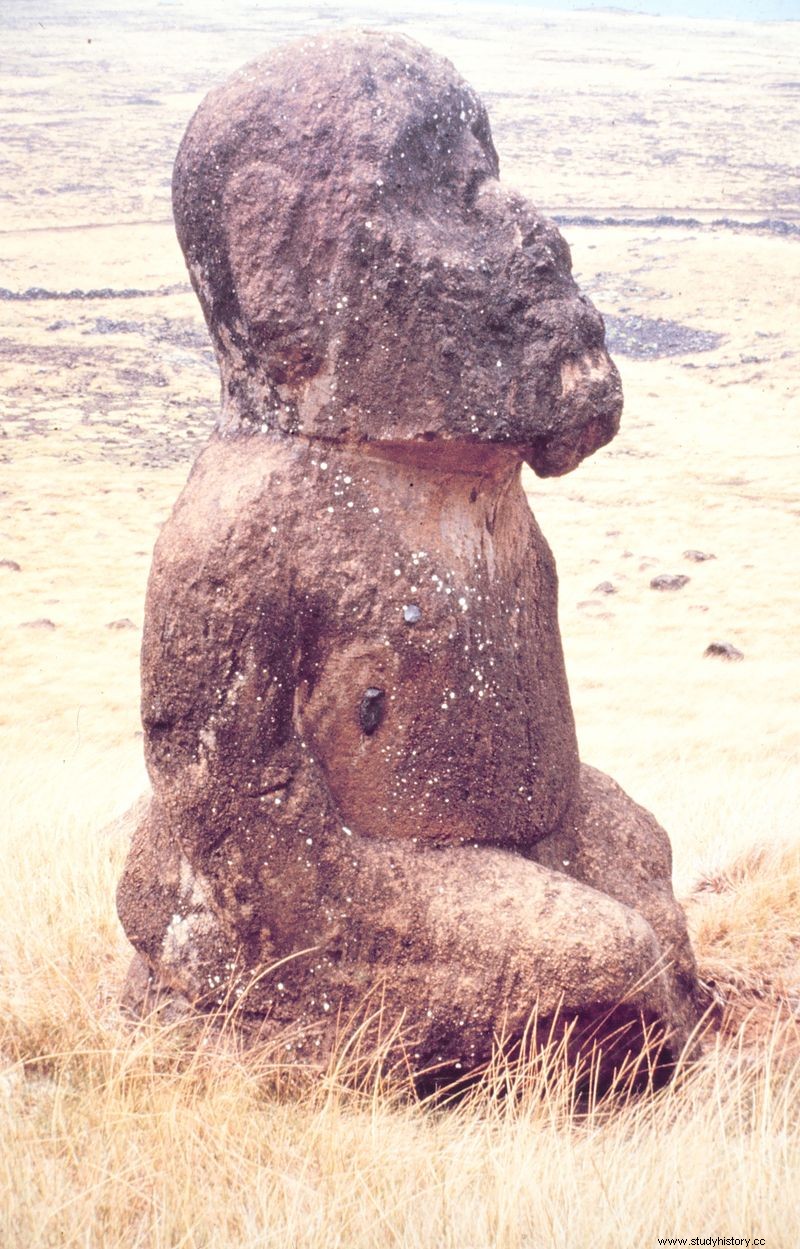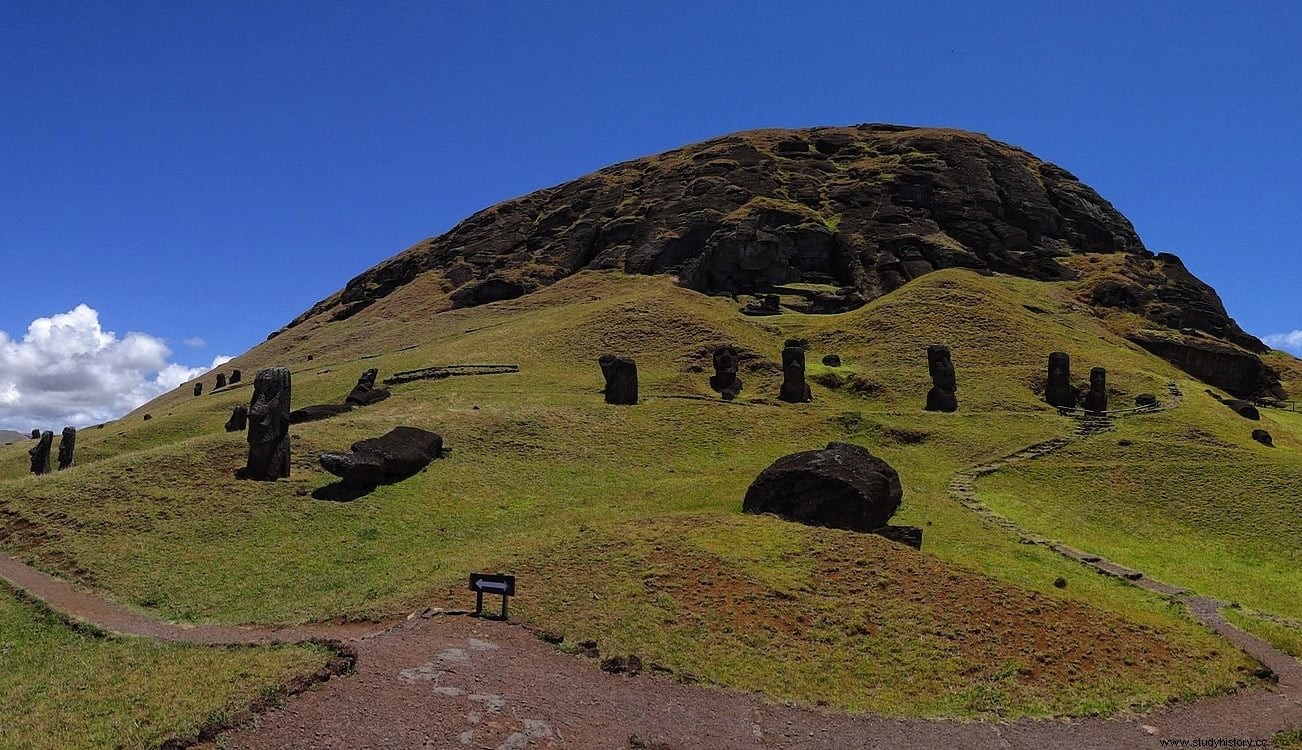The famous moai of Rapa Nui, Easter Island, are well known and are among the most unique monuments in the history of Humanity.
Recently, the hilarious viral news spread across the internet that moais weren't just heads, but that they had bodies underground, something that had actually been known for decades.
Around 900 are known, scattered throughout the island, and even more than 400 that were left unfinished around the main quarry, the Rano Raraku volcano. They were built between 700 and 1600 A.D., although many were later demolished by the natives, those that can be seen erect today being restored from 1956.

They were first investigated in 1914 by Katherine Routledge, who despite interviewing the natives and collecting some of their legends, was unable to discern either their function or their meaning. She also studied the island's unique script, the Rongorongo. Both elements continue to be a mystery to specialists today.
The only thing there are are theories, the most accepted of which establishes that the moai must have been representations of deceased ancestors.
If all this were not enough to feed the imagination and encourage hypotheses, it turns out that of the almost 900 moai that are preserved there is one that is different from the others in one detail. All the moai are upright, standing, although many remain sunk in the earth up to their shoulders. But this one is clearly kneeling .
It is known as Tuku Turi (sometimes spelled together as Tukuturi) and is one of those remaining in the vicinity of Rano Raraku. The name derives from the word tuku which is what they called that posture, and that it is related to a traditional festival called riu in which the members of the choir sang adopting that position.
At first it was thought that it could represent a woman, but the reality is that both the features of the body and the prominent beard it shows rule out this possibility.
Curiously, Tuku Turi is made of red scoria, a type of stone from Puna Pau, another quarry in the southwest of the island, and not of tuff like the moais extracted from Rano Raraku. It is smaller than the others, reaching only about 3.70 meters in height and weighing 10 tons. It was discovered by Thor Heyerdahl's expedition between November 1955 and April 1956.

What archaeologists do not seem to agree on is its chronology. Some believe that it may be one of the oldest moai (Don Schorn places it in the first century or even earlier), while others believe that on the contrary it is very possible that it is the last of those created, at a time when the production of the classics it had already stopped.
This last case gains strength if we believe its relationship with the tangata manu, the traditional annual competition that consisted of reaching the first egg of the season manu tara on the nearby islet of Motu Nui. It was a ceremony that marked the beginning of spring, within the cult of Make-Make, the bird man and main god of the islanders.
